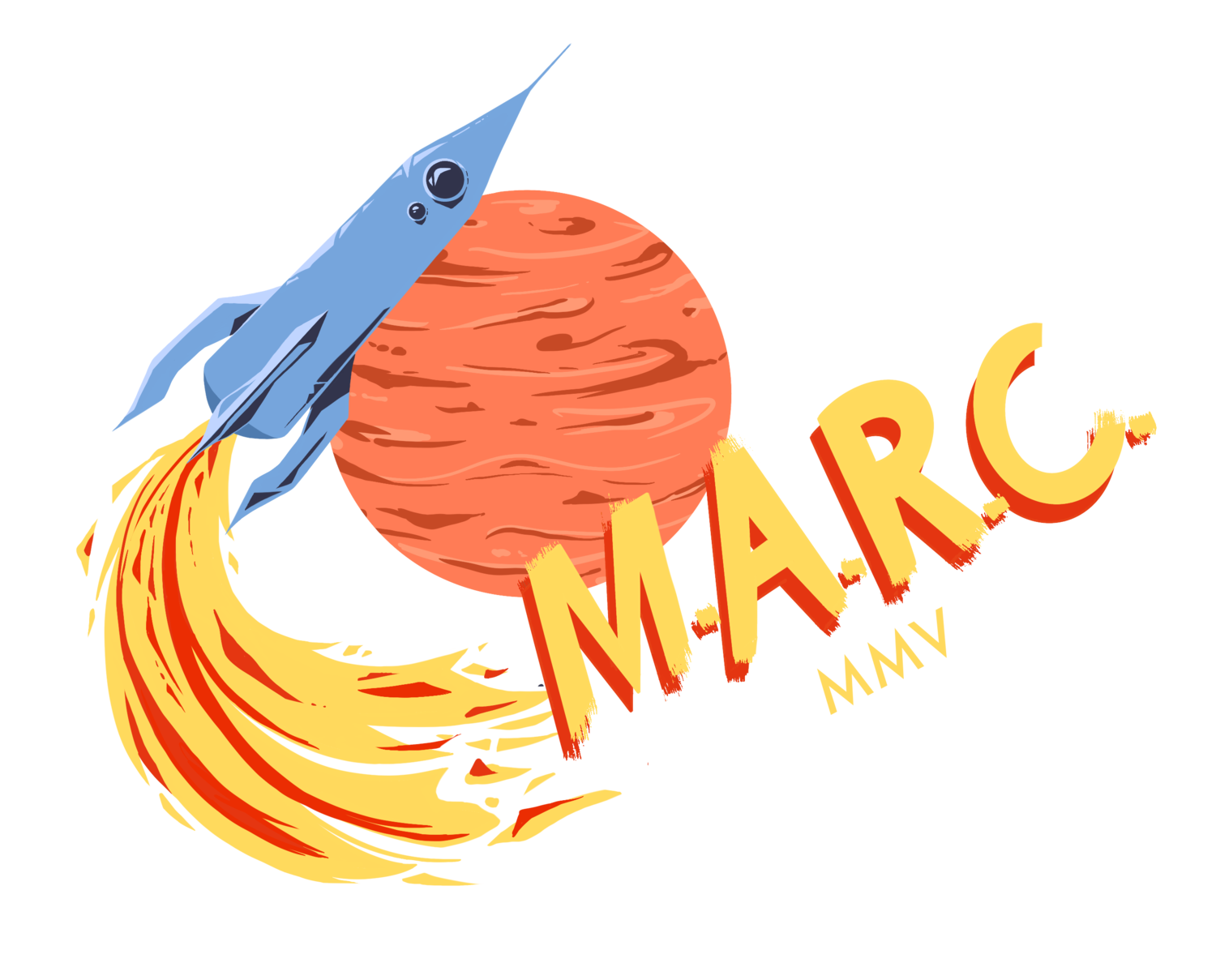
High Powered Rocketry
-
100%
Percentage of MARC students who are able to pursue High-Powered Rocketry if they so wish, with subsidies, clear directions, and generational knowledge lowering the barriers to entry.
-
26
Number of Level 1 High-Powered certifications in the past calendar year by members of MARC. An impressive number, especially for a club of about 80 students.
-
5
Number of Level 2 High-Powered certifications in the past calendar year. Dual deploy systems make this is an important and difficult step in a student’s High-Power career.
High Power Rocketry (HPR) is our bread and butter - MARC was founded in the midst of Professor Greg Lyzenga’s Level 3 certification project in 2005, and we’ve been launching ever since. MARC makes it possible for any student at Harvey Mudd College to build and launch their own rocket, building at their own pace and with plenty of aid both from other students and virtual tutorials.
HPR refers to the construction, validation, launch, and recovery of rockets fired on sufficiently large motors. Specifically:
Level 1: Motors between 160 - 640 Newton-seconds
Level 2: Motors between 640 - 5120 Newton-seconds
Level 3: Motors between 5120 - 40960 Newton-seconds
Students get started by building their Level 1 kits, which are standardized across the club. When they finish, they’re able to launch at any of our scheduled monthly launches. Building an L1 kit is an extremely low barrier to entry - they’re free (subsidized by the club) and do not require any prior rocketry experience. It’s a great onramp into the larger world of HPR. HPR is a great way to start getting involved with MARC.
Level 1
For most students, this is the starting point. MARC prides itself on a robust and inclusive build sequence for new students who have not worked with rockets before. Every fall, new rocketeers build their first rockets - custom kits designed by MARC. After they finish their build, rocketeers drive out to Lake Lucerne, CA, where they launch their rockets to obtain their Level 1 certification with either the National Association of Rocketry or Tripoli Rocketry Association.
Level 2
For more advanced students, and especially those who intend to take High Powered Rocketry (E178) with Prof. Spjut, Level 2 is an obvious next step. Primarily working with the Madcow DD DX3, rocketeers learn how to set up, test, and fly dual deploy systems while making relevant measurements along the flight path. Once students have launched their Level 2’s, they are well set up to pursue their Level 3 certification.
Level 3
For truly hardcore rocketry enthusiasts, obtaining Level 3 certification is the ultimate test of project management and execution. A lengthy process of certification must be supported by ample documentation, consistent and repeated Level 2 flights with electronic deploy, and mastery of rocket construction techniques, culminating in an ear-shattering launch on an M, N, or O Class motor. MARC helps facilitate the design and manufacturing process for students looking to obtain their L3 Certs!
HPR Resources
Many students get their start with HPR by building their humble LOC Vulcanites and flying it on an H motor to obtain their Level 1 Certification. Whether you’re taking your first steps towards your flight wings or you just want to brush up on how to calibrate your altimeter, this is the resource for you.
Monthly Launches
MARC drives out every month to launch with the Rocketry Organization of California (ROC), and occasionally at the Friends of Amateur Rocketry (FAR) in the Mojave Desert. Launch your rocket at one of our monthly trips and get your next certification level!





